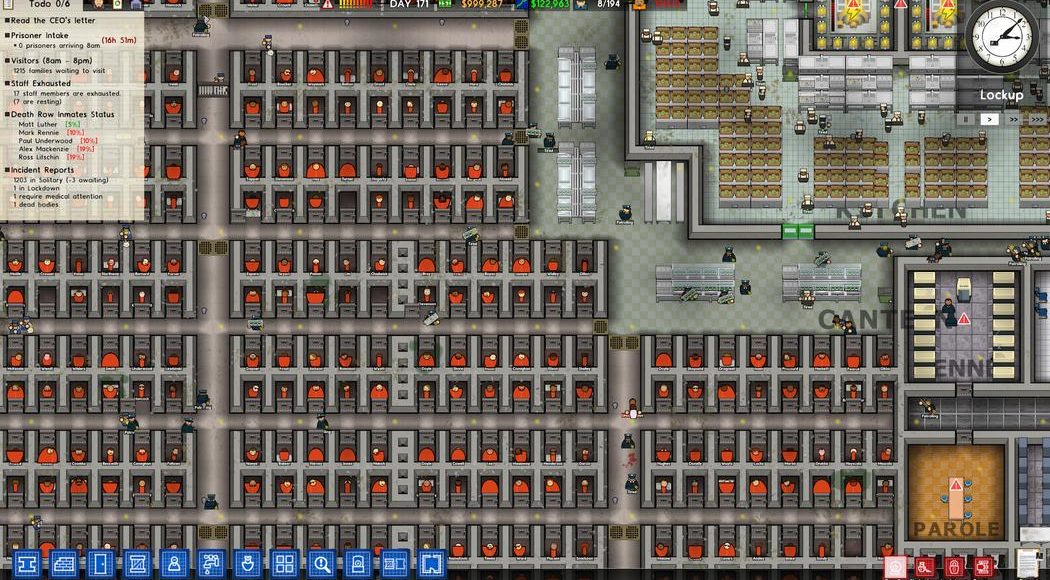Prison protests and strikes have a history that goes back as long as we’ve had prisons, so I decided to revisit Introversion’s Prison Architect and see if they had addressed this phenomenon in their wildly popular prison simulator. Though it’s not meant to be modeled after American prisons, as Introversion has made clear, Prison Architect could not exist without the use of imagery and language borrowed from America’s grotesquely outsized prison system.
One could hardly accuse Introversion of glossing over the details in their simulation. During its 4 year development, Introversion has added weather effects, CCTV, chapels, education programs, parole boards, gangs, drug and contraband systems. Prisoners can exhibit a whole range of moods, needs and desires. There hasn’t, unfortunately, been any inclusion of prison strikes or protests.
The only method that prisoners have to express themselves is by rioting – a critique also wagered by Paolo Pedercini in the critical essay he wrote two years ago for Kotaku. When Pedercini took issue with their straightforward depiction of prison labor, Introversion responded by defending the beneficial effects of prison work programs, which certainly have an allure of rehabilitation to them. After all, why shouldn’t prisoners spend their time learning new skills that can help them in the outside world? …continue reading on Waypoint

